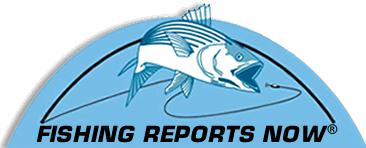page 2 of 2 |
| Manasquan River’s Winter Flounder By Capt. Anthony Reina, Angela Rose Charters, Point Pleasant |
Continued from previous page ... So you’re on your location, and your chum slick is filling the water, but now you have to get the catch in the boat. Your tackle would be your next thought. Tackle is simple and mostly a personal preference. Flounder are relatively small and provide the most fun when caught on light tackle. Most anglers use a light- to medium-action spinning rod with 6- to 12-pound-test monofilament line. A rig should consist of a size-8 or size-9 snelled flounder hook with two 12-inch leaders attached to each end of a wire spreader with a yellow-painted bank sinker attached to the center. This is known as a spreader rig. An alternative rig can be easily made by passing the end of the line through a fish-finder rig, attaching a black swivel to it, and then attaching a leader with a hook to that. Use a snelled flounder hook with a yellow bead, attaching the loop end to the swivel and attaching a yellow bank sinker to the fish-finder. Flounder are curious creatures, often looking for movement as a sign of a potential meal, and the yellow sinkers can help grab their interest, especially when bounced on the bottom at times. More about this topic later. Choosing a bait also isn't difficult. Bloodworms, sandworms, clams and muscles are the basic four choices. I personally like muscles over clams, because they prove to be especially effective baits and last a long time. Don't cut the bait too big, and in this case, big bait doesn't always equal big fish. The bait should be 2 to 4 inches long, and remember that the flatties have small mouths and suck in their prey. I will leave you with 10 solid tips and one of my favorite spots to
help you land 9. Try to match the hatch. After your first day out, while cleaning
your catch, check the contents of the stomach. This will give you a good
idea of what bait to bring out on your next trip. When you find out what
the flatties are feeding on, stay with it. As I promised, I’ll tell you one of my favorite fishing spots: the mouth of the Point Pleasant Canal on the Manasquan River side. If you’re fishing from land, fish the old hospital side of the canal but cast out toward Treasure Island. There is a really deep hold northeast by the red dayboard. Boaters are recommended to anchor between the red dayboard and the green can that marks the channel going up river toward the Route 70 Bridge. Of course, take all safety precautions to make sure you do not impede the flow of boat traffic. I always fish Manasquan River and Barnegat Bay, one of the best spots in the state for flatties. But the info I’m sharing will work equally as well in any waters that harbor winter flounder. |


